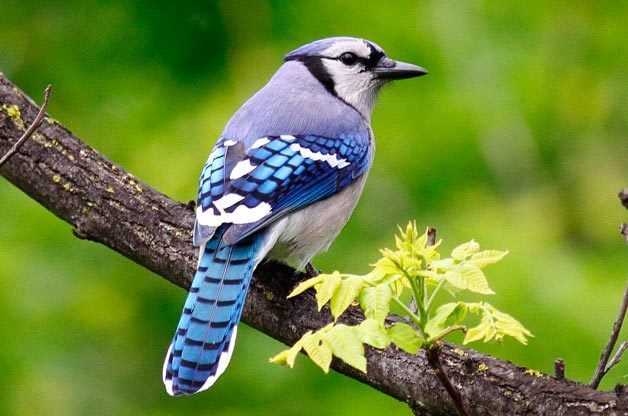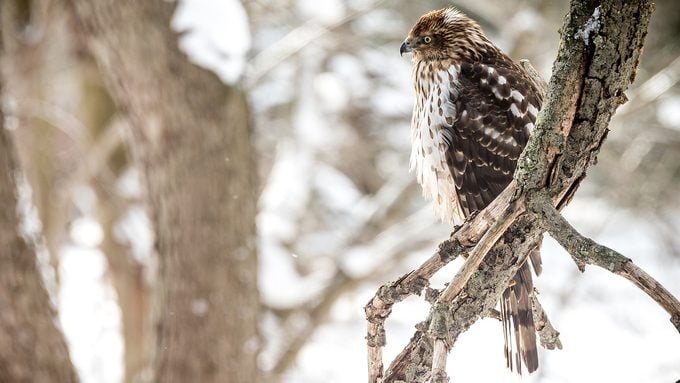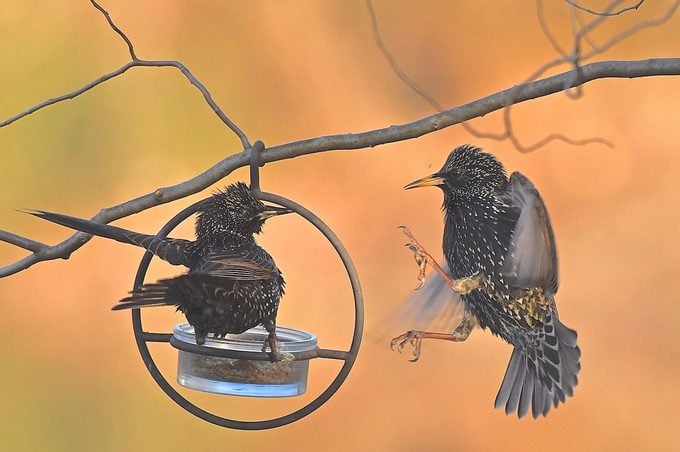Meet the Backyard Birds With a Bad Reputation
Updated: Nov. 01, 2023
Rethink your stance on the bad birds in your backyard by learning some birding basics about their behavior and personalities.
Bluebirds, goldfinches, hummingbirds, chickadees and warblers are beloved by backyard birders everywhere. Not all backyard species are as lucky, though. Take a look at these three bird families. Some people love ’em, while others don’t want them in backyards at all. What’s your perspective? Maybe after you know a little more about their behavior and their role in the ecosystem, you might develop an appreciation for these “bad birds.”
Crows
These large, gregarious birds probably first earned their bad rep because they’re scavengers, feeding on the dead bodies of other animals (including humans). This behavior, combined with their black color, has led them to become a symbol of death and a harbinger of doom in many cultures.
But once you look beyond the mythology, you’ll see a remarkably intelligent bird. Natural problem solvers, crows are supremely adaptable. They live in tight-knit groups and aren’t afraid to gang up on would-be predators to protect their families. Their scavenging plays an important ecosystem function by cleaning up carrion. Just make sure your trash cans have tight-fitting lids and you shouldn’t have any problems with crows. Learn how to deal with bully birds at your feeders.

Jays
Like their cousins the crows, jays are quite intelligent. Their calls are mostly harsh shrieks and they can be bullies at the bird feeder, but they have redeeming qualities, too. Jays are beautiful. Scrub, blue, pinyon and Steller’s jays come in lovely shades of blue, ranging from azure to indigo. Green jays also have blue heads, but their bodies are a gorgeous chartreuse.
Jays have the remarkable ability to remember the location of acorns and other nuts hidden months earlier. They can cleverly mimic the calls of other birds, including raptors such as the red-shouldered hawk. If you live in Florida, you might get lucky enough to attract the threatened Florida scrub-jay, sightings of which are a rare treat.

Hawks
Hawks are predators and feed on a wide range of animals. Red-tailed hawks take prey as large as rabbits, while tiny kestrels feed mostly on insects. It’s the medium-size accipiter hawks, however, that are often unwelcome in the garden. Species such as sharp-shinned and Cooper’s hawks feed on smaller birds and quickly learn that bird feeders, with their crowds of songbirds, are great hunting spots.
Try to keep in mind that such predation is totally natural, and that hawks need to eat and feed their babies, too. You can still help out your songbirds, though. Provide cover in the form of dense shrubs or a brush pile nearby. This way the songbirds will have a good chance of eluding raptors.

Unwelcome Backyard Birds
Here are a couple of “bad guy” birds that you definitely don’t want in your backyard.
House Sparrows
Introduced to North America in the mid-1800s, they’re aggressive and often chase native birds away from feeders. They also take over bluebird houses. Do your best to discourage them from your yard.
European Starlings
These were introduced to North America around 1890. If you have starlings at your feeders, take down feeders for a few days to see if the invaders will move on.
